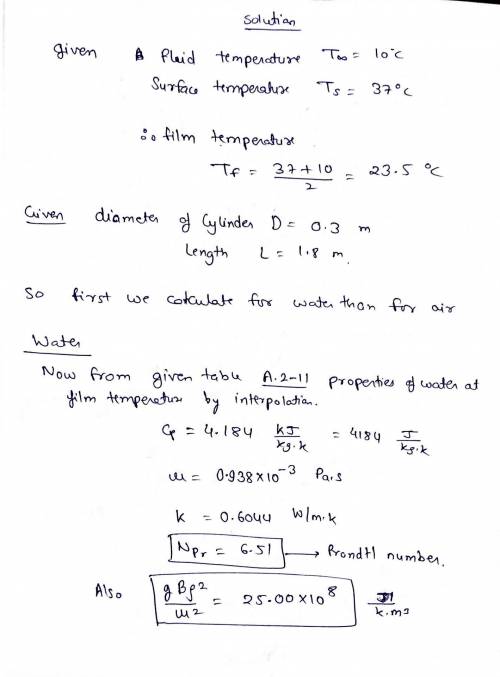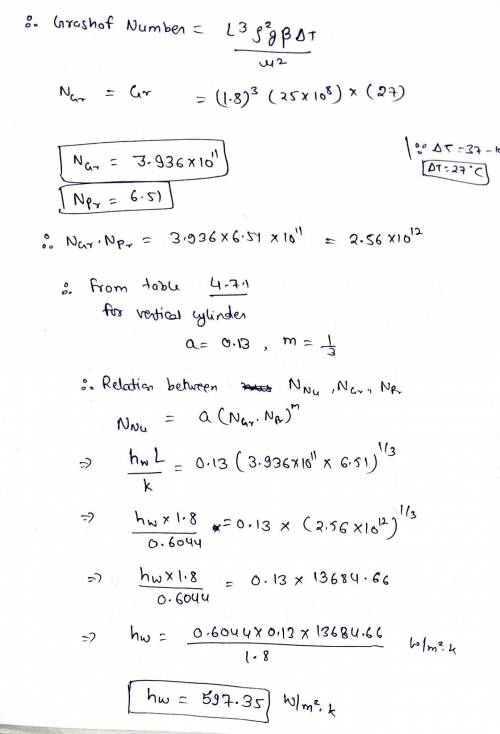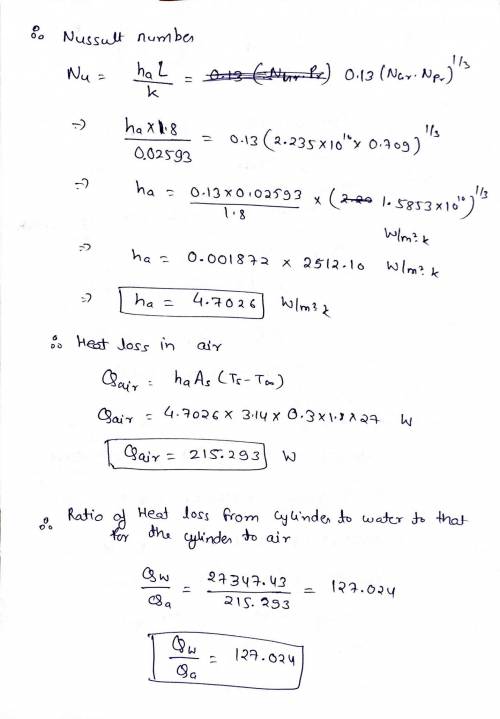
Engineering, 06.05.2020 00:28, wendybhenry61391
Problem 1: Experts on hypothermia tell us that heat loss from the body is much greater in 10°C water than in air at the same temperature. To test this, assume that heat transfer from a person can be approximated as that from a vertical cylinder of diameter D = 0.3 m and length L = 1.8 m, with a constant surface temperature of 37°C. Assuming that heat losses from the cylinder occur only at the lateral surfaces, calculate the ratio of the heat transfer rate from the cylinder to water to that for the cylinder to air. Data for the heat transfer properties for water and air can be found in the Appendix in Tables A.2-11 and A.3-3, respectively, and appropriate correlations can be found in eqns (4.7-4), and Tables 4.7-1 and 4.7-2. What do you conclude from this about your odds of survival if you fall into a cold water lake/ocean? (Hint: neglect the cylinder height restriction in Table 4.7-1).

Answers: 2
Other questions on the subject: Engineering

Engineering, 03.07.2019 14:10, cowgyrlup124
Explain the difference laminar and turbulent flow. explain it with the shear stress and the velocity profiles.
Answers: 1

Engineering, 04.07.2019 18:10, niyawilliams23
Asingle-geared blanking press has a stroke of 200 mm and a rated capacity of 320 kn. a cam driven ram is assumed to be capable of delivering the full press load at constant force during the last 15 percent of a constant-velocity stroke. the camshaft has an average speed of 90 rev/min and is geared to the flywheel shaft at a 6: 1 ratio. the total work done is to include an allowance of 16 percent for friction a) estimate the maximum energy fluctuation b) find the rim weight for an effective diameter of 1.2 m and a coefficient of speed fluctuation of 0.10
Answers: 1

Engineering, 04.07.2019 18:10, 0436500
Aturning operation is performed with following conditions: rake angle of 12°, a feed of 0.35 mm/rev, and a depth of cut of 1.1 mm. the work piece is aluminum alloy 6061 with t6 heat treatment (a16061-t6). the resultant chip thickness was measured to be 1.0 mm. estimate the cutting force, fc. use shear stress of 207 mpa and coefficient of friction on the tool face of 0.6.
Answers: 1

Engineering, 04.07.2019 18:20, kodyclancy
Aquick transition of the operating speed of a shaft from its critical speed will whirl amplitude. (a) increase (b) limit (c) not affect (d) zero
Answers: 2
Do you know the correct answer?
Problem 1: Experts on hypothermia tell us that heat loss from the body is much greater in 10°C water...
Questions in other subjects:


Health, 30.05.2021 02:00




Social Studies, 30.05.2021 02:00

Chemistry, 30.05.2021 02:00


Mathematics, 30.05.2021 02:00

Mathematics, 30.05.2021 02:00










